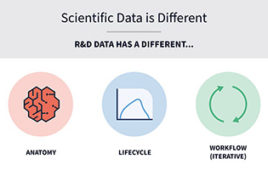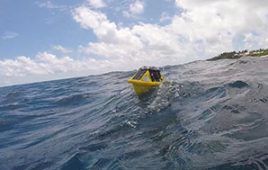 |
The second half of the above title comes to us via a delightful feature article in the January 2007 issue of Physics Today. The author, Michael Deem, is a professor of physics and astronomy and biochemical and genetic engineering at Rice University (interesting combo). He begins by stating, “The contemplation and resolution of questions at the interfaces of biology, mathematics and physics promise to lead to a greater understanding of the natural world and to open new avenues for physics.”1 The last sentence could have just as easily been ended with the word ‘biology.’ He goes on to propose three interesting areas of biology that might profitably be explored through mathematics to yield a deeper understanding of the underlying processes.
That these incursions of mathematics and physics might be necessary, and not just a nice adjunct to the usual biological arguments, may be seen in many graduate and professional seminars where biologists discuss their work. If one listens for a sufficient length of time to the questions, arguments and counter arguments in these meetings, a pattern or — more correctly — a rhythm seems to emerge. Where the biologist may be hearing very cogent reasons why certain weaknesses have or have not been spotted in a particular experiment, others outside the discipline may be hearing this as:
Point: “I’ve memorized more biology than you have.”
Counterpoint: “Oh no no. I’ve memorized much more biology than you have.”
If this sounds overly simplistic, to say nothing of caustic, let’s explore a few ways around the interminable discussions that lead to deadlock.
In discussing any biological problem, confining the arguments strictly to the science of biology was once appropriate, but now grossly shortchanges the discussion. If we are looking at a genomics problem, for example, what we really want to tease out is the ultimate gene action in an organism and not what genes may have lit up on a microarray chip. To do this, we could examine the known gene products and deduce their chemical actions in certain areas of the cells, hypothesizing that, if a certain gene or set of genes were actually involved in the action under discussion, there would be certain biochemical consequences. These biochemical consequences are governed by the same laws of mass action with which we became acquainted in undergraduate chemistry. Does this mean running into the lab and spending a month or two gathering a lot of cellular/biochemical data? Probably not, as the high-throughput techniques employed in molecular biology and chemistry practically ensure that relevant data has already been collected or can quickly be amassed.
Once that is done, consider: do the biochemical reactions documented support the contention that this gene activated and up regulated this or that pathway/reaction scheme? Is the chemistry even possible under the hypothesis? Can we now calculate whether or not there are enough reactants, including pH-relevant ions, to support the reaction in the relevant areas of the cell? Can the individual molecular species even contort themselves into a configuration that will support binding? Although these questions can, many times, be at least partially addressed by back-of-the-envelope calculations, we are most comfortable dealing with our own specialties, and rarely do we have the courage to venture beyond the well-defined borders of our own disciplines, especially where math and physics are involved! This is a shame, as the consideration of these other factors may indeed break the hypothesis impasse. As for the argument that, as practitioners of a certain discipline, we need only call on the specialists in the other areas, we do that anyway, but we need to know enough to speak their language, at least at a rudimentary level! There are other things that I could say against this argument, but I wish to keep the discussion suitable for young ears.
Reference
1. Mathematical Adventures in Biology. Michael W. Deem. Physics Today, 60(1), pp 42-47, Jan. 2007.
John Wass is a statistician based in Chicago, IL. He may be reached at [email protected].




